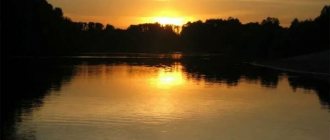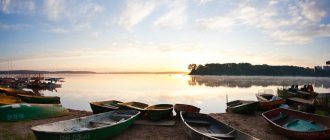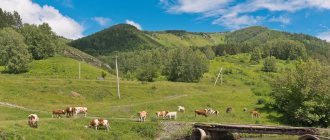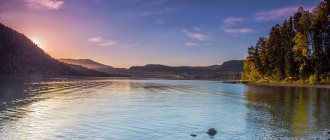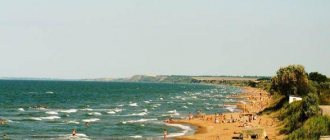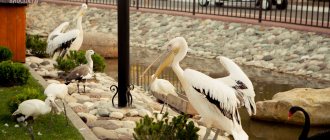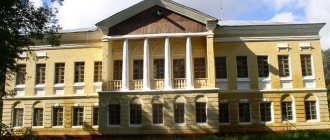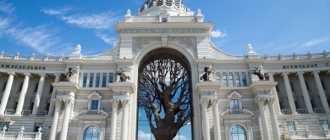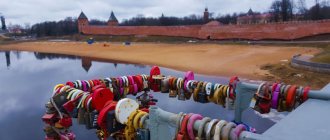Kaliningrad, founded back in 1255 by the Teutonic Knights and bearing the name Königsberg until 1946, is one of the most visited cities in Russia by tourists. Over its almost 800-year history, it has survived many wars and given the world many wonderful people, including the great philosopher Kant. The operations to liberate Koenigsberg in April 1945 were distinguished by particular tenacity and bloodshed. The Nazis defended the capital of East Prussia with frenzy, battles took place literally on every street. Then about 70% of city buildings were destroyed. Restoration work began literally immediately after the end of the war. Today, the revived Kaliningrad is a prosperous and amazingly beautiful city.
Interesting architecture of Kaliningrad
The city has always carried out painstaking work to restore its historical appearance. Having seen the sights of Kaliningrad, photos and descriptions of which are presented in this section, you will be able to get an idea of what it was like at different periods of its long history.
Royal Gate
- Address: st. Frunze, 112. Transport stop “Litovsky Val”.
The Royal Gate, which was part of the fortifications surrounding Königsberg Castle, is considered one of the iconic historical monuments of the city. They became the symbol of celebrations during the celebration of the 750th anniversary of Kaliningrad. The first stone of the gate was laid in 1843 in the presence of King Frederick William IV, but this is not why it got its name. The front facade of the mini-fortress is decorated with high reliefs of three great rulers who played a significant role in the history of the city: the Prussian king Frederick I, the Czech monarch Otakar II and Duke Albrecht I. The central part of the structure has four high towers. Four more smaller towers were erected at the corners of two symmetrical pylons. The gate, which was almost demolished in the second third of the last century, has been carefully restored and looks amazing.
Villa Schmidt
- Address: Pobedy Avenue, 24. Transport stop “Ulitsa Ogareva”.
Villa Schmidt is considered one of the most original buildings in the historical district of Amalienau. Built in 1903 for a wealthy merchant who sold mineral water, the mansion is considered the most accurate embodiment of the architectural Art Nouveau style that was popular in Germany at the beginning of the last century. The exterior of the building is distinguished by the careful attention to detail in even small details. Its facade is decorated with stucco elements in the Gothic style. In the pseudo-arch of the window opening on the second floor, a bas-relief in the form of a lion’s head is carved, and the entrance to the terrace is decorated with a mascaron of a girl with flowers woven into her braids. The composition of the villa attracts with its asymmetry, which in no way spoils the overall wonderful impression left by the building.
Police Presidium building
- Address: Sovetsky Prospekt, 3-5. Stop "Sovetsky Prospekt".
This Renaissance-style mansion, built of clinker bricks in 1912, is associated with a lot of dark history in the city. Suffice it to say that from 1933 until the liberation of Königsberg it housed the Gestapo, and in Soviet times the NKVD and KGB structures. But this does not make the building any less attractive from an aesthetic point of view, and after the restoration, completed in 2021, it looks great. The central entrance portal is framed by two magnificent columns. Its shell arch is decorated with finely crafted reliefs. The main figure of the composition of plant patterns is the head of a warrior in an antique helmet.
Rossgarten Gate
- Address: st. Marshal Vasilevsky, 3. Transport stop “Marshal Vasilevsky Square”.
One of the urban legends is associated with this gate, which is one of the seven similar fortifications of the Königsberg citadel that have survived to this day. They say that it was through them that the famous Baron Munchausen once entered the city during his journey from Russia to Germany. The composition of the structure includes a central part with a high arched passage, the width of which reaches 4 m, limited by two towers, and six casemates symmetrically located relative to it. The gate is a magnificent example of neo-Gothic fortress architecture. On the outside of the façade they have loopholes, and on the inside they are decorated with an arcade with columns.
Friedland Gate
- Address: Dzerzhinsky street, 30.
Today, several city gates of Kaliningrad, which were part of the fortifications, have survived. Among the most famous it is worth mentioning the Friedland ones. They were built in the middle of the 19th century, namely in 1857-1862. They are an example of the neo-Gothic style, attracting with their stately and majestic appearance, reminiscent of the “European past” of the city. On the facade there is a sculptural image of Master Siegfried of Marienburg.
Friedland Gate is not only an architectural object, but also a museum object. The exhibition operating here will reveal the pages of the urban history of the former Koenigsberg. Visitors to this exhibition attraction will learn about the construction of both the Friedland Gate and the numerous fortifications that surrounded the polis. Every year the museum hosts a knightly festival, which has become an integral part of the Kaliningrad City Day celebrations.
Sackheim Gate
- Address: st. Litovsky Val, 61.
They are located in close proximity to the “main” - the Royal Gate. The fortification originally appeared here in the 17th century. The appearance that tourists and residents of the city of Kaliningrad see today, the Sackheim Gate acquired in the mid-1850s.
Historically, these gates served as a checkpoint and were the point of entry into the city. Having lost this role, they began to be considered a “Kaliningrad variation” of the Arc de Triomphe. After Koenigsberg became a “Soviet trophy” in World War II and turned into Kaliningrad, the fate of the gate was not enviable. The Soviet authorities organized a warehouse here.
In the middle of the first decade of the new century, reconstruction of the gate began. In 2006, the Union of Photographers settled here. The building began a “new life”. The art space “Gate” was organized in the premises. The building is recognized as a historical and cultural monument of federal significance.
House of Soviets
- Address: Kalinina Avenue, 117. Transport stop "Oktyabrskaya Street".
According to the plans of the city authorities, by the end of the 80s of the last century, a grandiose structure was to appear in Kaliningrad, embodying the power of the socialist system by its appearance alone. The location for its construction was no less symbolically chosen - in fact, on the ruins of Königsberg Castle. However, the construction of the building, consisting of two 28-story pylon towers connected by passages at different levels, was never completed. At first it turned out that the soil underneath was of insufficient density, and when the foundation was strengthened, the city treasury ran out of money. At the beginning of this century, it seemed that an investor was found who was ready to complete the construction. However, it soon became clear that the sale of the long-term construction was carried out with financial irregularities. The potential developer ended up behind bars. So in the historical part of the city there stands a kind of monument to the long-term construction, however, very beloved by Kaliningrad residents.
Waldau Castle
- Address: Kaliningradskaya st., 20A, Nizovye village.
About 7 km from Kaliningrad there is one of the most famous medieval castles of the Teutonic Order - Waldau. Its history began in the 13th century, the first mentions in historical documents date back to 1264. The castle was built for defensive purposes and served as a fortress. In the 15th century, the residence of the chief master of the order was located here. There is a significant page in its history connected with the Russian past. The outstanding ruler of Russia, the reformer Tsar Peter I, stayed here in 1697.
During the post-war “Soviet” period of history, educational institutions were located in the castle. For the sake of fairness, it is worth noting that the “educational” function of its premises was also performed under the Germans, from the middle of the 19th century. Nowadays, most of the historical structure is in ruins. In the part that has survived to us, a museum has been opened - “Valdava Castle”, which tells about the long and difficult history of the building. Part of the exhibition is dedicated to one of the most famous spiritual knightly orders of the Middle Ages.
Tips, reviews, stories from tourists
If you are going to Kaliningrad in winter, you should definitely study the city guide. In addition to attractions, it describes in detail the city's transport system, the best places for shopping and other important background information.
Kaliningrad amber Photo: © Inna Savinskaya
The experience of winter trips to Kaliningrad and photo illustrations of other tourists will be useful.
Winter stories about Kaliningrad
- December trip Kaliningrad - Svetlogorsk - Chernyakhovsk - Gusev from Roman
- Notes by Vladimir Shalaev, conveying the atmosphere of the Baltic city - A city with two names
- A story from Elena Borzykh - Where Koenigsberg ends and Kaliningrad begins
- Konstantin's detailed story about the Museum of the World Ocean
- Essay on Catherine - With an amber spoon in her mouth
- Elena's photo album - Galloping through Europe in Kaliningrad!
All tourist reviews about Kaliningrad
Szczecin in winter Photo: © Vesnuschka2016
The main churches of Kaliningrad - TOP-3
Kaliningrad boasts a whole scattering of religious buildings erected here over a long history. Some of them were seriously damaged by bombing during the war, and after restoration they began to be used for a different purpose. In this section you will find a description of the most interesting and revered operating temples.
Holy Cross Cathedral
- Opening hours: daily, 24 hours a day.
- Telephone.
- Address: st. Generala Pavlova, 2. Transport stop “Fish Village”.
This temple was converted into an Orthodox cathedral from a Lutheran church built by Arthur Kickton between 1930 and 1933. The dominant exterior of the majestic building, whose architecture harmoniously combines lush neoclassicism, strict Gothic and practical Art Nouveau, is a huge niche between the two towers of the western facade. It is covered with a magnificent panel depicting a cross. The interior of the temple is no less magnificent, the true pearl of which is considered to be the iconostasis made of amber.
Cathedral of Christ the Savior
- Opening hours: daily, from 9:00 to 21:00.
- Telephone.
- Website: https://www.soborkld.ru
- Address: Victory Square, 2. Transport stop “Victory Square”.
The foundation stone for the main Orthodox church of the city was installed during the celebration of the 1000th anniversary of Christianity in Rus' by the then Metropolitan Kirill of Kaliningrad and Smolensk. Construction work began in 2004, and two years later the cathedral was consecrated. The architectural features of the temple are the protruding entrance portals and the magnificent glazed arches of the facade, covering an area of about 1000 m². The Byzantine domes of the cathedral rise 69 m above the ground. The interior amazes with the abundance of marble and polished granite in the decoration. The largest bell installed on the belfry weighs about 14 tons.
Church of St. Andrew the First-Called
- Opening hours: daily, from 8:00 to 20:00.
- Telephone.
- Website: https://www.andreevsky-kd.cerkov.ru
- Address: st. Komsomolskaya, 64. Transport stop “Chekistov Street”.
Another temple, which appeared in the city quite recently, was built in honor of St. Andrew the First-Called. The church, consecrated in 2007, is very interesting from an architectural point of view. Its exterior is designed in the best traditions of church architecture of the Russian North. Temples with similar architecture, characteristic of the authentic style widespread in the 17th-18th centuries, are quite rare in the western cities of the country. The white-stone, single-domed church with a low drum and a gilded dome looks surprisingly elegant.
Climate
Winter Kaliningrad is mild compared to other northern cities of our country. This is facilitated by the warm Atlantic Gulf Stream current. Winter here is short-lived, although it only lasts three calendar months. But if in the center of Russia the snow remains until April, here it disappears by the end of February.
The average temperature is about 20 degrees below zero. The last cold month is marked by rapid warming, up to 15 degrees Celsius. However, this rarely happens - the influence of the northern seas is still felt.
Precipitation during this period is only 200 mm. The mild climate means that it rains more often instead of snow. The city can compete with London for the title of one of the foggiest places in Europe. But in general, the winter is stable, the weather is not unpredictability, so the trip will only bring pleasure.
Kaliningrad: interesting monuments of the city
Over the course of its long history, the city has erected many different monuments to historical figures. However, among them there are several monumental creations that you simply must see.
Triumphal Column
- Address: Victory Square. Transport stop "Victory Square".
The column, installed to celebrate the 750th anniversary of Kaliningrad in 2005, became not only the architectural dominant of Victory Square, but also one of the symbols of the city. True, it acquired its final form only 8 years later. Then a huge granite Order of Victory was placed on top of the 26-meter monument. The column is placed on a tetrahedral pedestal, the sides of which are decorated with bas-reliefs telling about the glorious victories of Russian weapons. They depict Napoleon's Cossacks crushing soldiers, fragments of the Seven Years' War, the Great Patriotic War and World War I.
Monument to the Conquerors of the Near Universe
- Address: Mira Avenue. Transport stop "Zarya Cinema".
It was no coincidence that the monument to the explorers of outer space appeared in the city. The Kaliningrad region gave the country a whole galaxy of cosmonauts - Alexei Leonov, who became the first person to walk into outer space, Yuri Romanenko and Viktor Patsayev, who tragically died during the landing of the descent module of the Soyuz-11 spacecraft. On the four-step terrace there is a pedestal on which is mounted a ring symbolizing the earth's orbit, with the figure of an astronaut inside. Plates with bas-reliefs of space pioneers are mounted on the sides of the pedestal. The author of the monument, erected in 1980, is the famous sculptor Edunov.
Wrestling bison
- Address: Mira Avenue, 1. Transport stop "Technical University".
One of the oldest monuments in Kaliningrad, which appeared in its place in 1912, is loved by citizens and popular with tourists. The author of the composition depicting two bulls grappling in a fierce fight, cast in bronze in life-size, is one of the most famous animal sculptors of the early last century, August Gual. The animal figures are made with amazing precision. Their tense muscles and swollen veins are clearly visible. The sculpture is placed on a stone pedestal in front of a small pool. Streams of water and figured rosettes placed at the base of the monument flow into it.
Monument to Baron Munchausen
- Address: Central Park of Culture and Leisure.
The main dreamer of world literature is Baron Munchausen, who came from the pen of the writer Rudolf Erich Raspe. His name has become a household name and denotes a person who knows how to lie beautifully and invent all sorts of fables. But this is not only a book hero, but also a real historical figure of the 18th century.
The historical Baron Munchausen served in the Russian Empire. And today, a monument to the hero, in whose image fiction and reality are intricately intertwined, is erected in a city where Russian and German cultures are intertwined. The great inventor was sculpted by the German sculptor G. Petau. The sculptural embodiment of Munchausen appeared in Kaliningrad in 2005.
Monument to Friedrich Schiller
- Address: Mira Avenue.
The “German past” of the now Russian city is reminded, among other things, by the monument to the outstanding poet and philosopher Friedrich Schiller. His fate had nothing to do with Königsberg, but needless to say that for all of Germany the name of Schiller is of great importance. The monument appeared here back in the “German era”, in 1910, and was timed to coincide with the anniversary of the local opera house, whose history began with the production of one of Schiller’s plays. The Soviet Union and Russia respected the memorial sign to the great German, because his figure is significant for the entire world culture; in 1950, the monument was restored and equipped with a plaque in Russian.
Monument to Alexander Marinesko
- Address: Marinesko embankment.
On the embankment of Nizhny Pond in Kaliningrad there is a bronze figure of the legendary Soviet submariner, hero of the Soviet Union Alexander Marinesko, who fought in the Baltic Fleet during the Great Patriotic War. Since 1990, the embankment has been named after the hero. The monument by sculptor F. Moroz was erected in 2001.
What to do in the Kaliningrad region?
A vacation would be incomplete without seaside relaxation and the ruins of a past life. We have collected a few ideas for your first acquaintance:
Visit the Curonian Spit
Probably the most publicized place near Kaliningrad - and deservedly so. A narrow strip of sand separates the bay from the sea and allows you to see real dunes, raging waters and curved trees - the famous “Dancing Forest”. The border with Lithuania runs along the spit, so now you won’t be able to drive from beginning to end, you can only see it from an airplane. An audio guide has been developed for the Russian side, allowing you to study the history of the national park and the protection of villages on the spit from wandering sands.
Photo: sam-turizm.ru
Choose your city on the coast
Zelenogradsk, Svetlogorsk or Baltiysk? What do you like - the cozy streets of the “catty” Kranz, the measured life in the spa world of Rauschen or the harsh naval Pillau? We're talking about just three cities, each with character and history, and visiting each would be the right decision. The distances between them are small, so you can see everything even in a day - of course, with a car.
Photo: tourtrans.ru
Explore ancient forts
If you're short on time, then visit at least one of these 12 forts, for example, No. 11, called Dönhoff: the strong walls and intricate casemates are a little overwhelming, but this is an ideal place for those who like to wander along the corridors.
Photo: vladrink.livejournal.com
We didn’t talk about the lighthouses of the Kaliningrad region, didn’t mention the dilapidated churches that are scattered throughout the region, and didn’t pay any attention to the castles: leave yourself the opportunity to be surprised when you meet them. The Kaliningrad region is unique and beautiful, so give it a chance to captivate you
.
Where to go with children in Kaliningrad. Entertainment
The city has several of the most interesting places that reviews from tourists recommend visiting with children. These include various parks and their multifaceted entertainment.
Zoo
- Opening hours: daily from 9:00 to 20:00.
- Ticket price: adult 270 rub., child 50 rub.
- Phone: +7 401 293‑73-99.
- Website: https://www.kldzoo.ru
- Address: Mira Avenue, 26. Transport stop "Zoo".
It’s simply impossible not to visit one of the oldest zoos in Russia, dating back to 1896. By the beginning of World War II, it could boast a magnificent collection of various animals. Unfortunately, almost all of its inhabitants died during the liberation of the city from the Nazis. However, just a few years after the end of the war, the zoo began to be restored, and soon it again became a favorite vacation spot for the townspeople. Today the zoo houses more than 2,360 amphibians, birds, mammals, reptiles and fish. In addition to the fauna, walking along the shady alleys, you can enjoy the stunning flora of the park: hundred-year-old oaks and hornbeams, gingko trees, flowering magnolias, sakura and rhododendrons.
Immanuel Kant Botanical Garden
- GPS coordinates: 54.737563, 20.515078.
You can get acquainted with the kingdom of flora and see more than two and a half thousand plants from different parts of the planet in the Kaliningrad Botanical Garden. It is administered by the Baltic Federal University, named after the famous philosopher, native of Kaliningrad, Immanuel Kant. The Koenigsberg Botanical Garden traces its history back to the end of the 18th century; a little more than a decade after its founding, it became a “university garden”.
Where to stay
The cost of accommodation will depend on the chosen hotel and length of stay. The attractions are located in the main center, so if the purpose of the trip is to study history, you should choose apartments nearby. The following hotels are popular among tourists:
- "Moscow" - 3 stars. Located in the business district of the city, in a building that is considered an architectural monument from the 1930s. Opposite is the zoo. The Drama Theatre, entertainment centers, a cinema, the main square and a park are also nearby. For guests who come to Kaliningrad on work matters, conference rooms and meeting rooms are available. The estimated cost of rooms is from RUB 3,500/day.
- "Berlin" - 3 stars. Convenient location near the station. When booking more than 3 days, free airport transfer is provided. There is a restaurant on site serving Russian and European cuisine. Price per day – from 2100 rub. Guests can also benefit from a beauty salon and massage services.
- “Tourist” – 3 stars. There are rooms for presentations and negotiations. There is a cinema and a shopping center within a 5-minute walk. It is located on the shores of Lake Superior and gives visitors a picturesque view from the window. On site there is a gym for active recreation, a grill house and a nightclub. Cost – from 3,600 rubles/day.
- "Skiperskaya". The building is designed in the style of European Order architecture. Adjacent to Immanuel Kant Island, the most important attraction of which is the Cathedral. Next to the hotel is the Mayak view tower. Surrounded by all these beautiful views, and most importantly - the river, they offer tourists accommodation. A comfortable and cozy place for those who want peace and privacy. Rooms from RUR 3,500/day.
A guest house will cost less. History buffs will certainly enjoy the small boarding houses located in mansions from the 50s.
Tourism in Kaliningrad is actively thriving. The city will attract attention with its unique German architecture combined with familiar Soviet five-story buildings. LikenGo knows that to celebrate the New Year in Europe, you don’t have to leave your home country.
Royal Castle of Konigsberg
Alas, only a few ruins remain of the Royal Castle.
The castle was founded in 1255 on the high right bank of the Pregolya. Previously, in this place, on the flat wide top of a small hill, there was a settlement of pagan Prussians. At the same place, the Teutonic knights decided to build a fortified castle. The city of Altdorf arose under the castle walls. It was connected to the neighboring city of Kneiphof by bridges.
The mountain was named Royal, after which the city later became known as Königsberg (“royal mountain”). Königsberg included three cities: Altdorf, Kneiphof and Lomse, as well as their suburbs.
What the castle looked like can be seen in numerous photographs, as well as in the cathedral museum - on a model.
Like the cathedral, the castle was badly damaged during the bombing in August 1944. It remained in ruins until 1967. On the eve of the celebration of the 50th anniversary of the revolution, the castle was ordered to be demolished by the first secretary of the local CPSU regional committee, Konovalov. They also set their sights on the cathedral, but it was saved by the fact that Kant was buried under its walls.
Instead of the beautiful Gothic castle on the Royal Hill, they began to build the House of Soviets, an ugly square structure that now towers over the city.
It remained unfinished - during perestroika, funding stopped. So it stands in the very center of Kaliningrad, on a hill of gray squalor, and in front of it is empty space. And on the edge of the hill are fragments of the castle.
Art and history museums
The Museum of Fine Arts occupies a luxurious former stock exchange building. You will definitely pay attention to it during a boat trip.
The neo-Renaissance building was built in the second half of the 19th century. Not only trade transactions were carried out here, but also concerts and balls were held. In addition to paintings and sculptures, the museum features exhibitions dedicated to the history of the building and the city.
The History and Art Museum is located on the eastern side of the Lower Pond, in the building of the former Stadthalle concert hall. This is an interesting local history museum, which presents the history of the region, its fauna and flora. It contains the panorama “Assault on Königsberg”.
Fishing village
The city of Lomse is the third component of Königsberg, a city that occupied a large flat island next to Kneiphof. These island cities were connected by the Honey Bridge.
Now the island of Lomze is called Oktyabrsky. Near the Honey Bridge there is a luxurious synagogue building, and along the Pregolya embankment, from the Honey Bridge to the High Bridge, the Fish Village is built.
The Fishing Village is a complex of buildings stylized as pre-war buildings in Königsberg. It was built from 2006 to 2010. It turned out really nice.
A wonderful view of the Fishing Village opens from the Festival pedestrian bridge.
And this is what the Fishing Village looks like in the late afternoon from the Honey Bridge.
These pseudo half-timbered houses house various cafes, restaurants, offices, a rowing club, an arcade, a business center, and hotels.
You can climb the Mayak Tower.
Hotels in Fish Village:
Hotel Shkiperskaya 3*
Hotel Kaiserhof 4*
Hotel U Honey Bridge 3*
Holidays in the Baltic
Of course, people usually go to the seaside to relax in the summer. But you can have an interesting time in the Baltic even in winter. Svetlogorsk and Zelenogradsk
- cities located on the coast near Kaliningrad.
They are easily accessible by bus or train. resort Svetlogorsk
to small Swiss villages. Here are the same bright houses, located on clean relief streets. These are mostly new buildings; there are practically no old buildings in the city. But the city has a larger selection of cozy cafes and restaurants.
The local embankment is small in size, but offers stunning views
. You should definitely come here with children, who will enjoy looking at the sea and feeding the birds. The pigeons here are absolutely not shy and easily sit on your hands or shoulders. You and your children will definitely enjoy the process of feeding them.
Svetlogorsk embankment in winter
Zelenogradsk is significantly different from Svetlogorsk. The city's German past is more clearly visible in it. Therefore, walks inspecting old houses and streets
will certainly interest you. Where these coastal cities are similar is in the small size of the embankments and the abundance of birds that come for food. But in Zelenogradsk you can no longer feed pigeons, but seagulls.
Winter Zelenogradsk
But you will meet not only these representatives of the animal world in the city. cat museum “Murarium” is also located here.
. Of course, the exhibits of the museum are not living fluffies, but only a variety of objects made in the shape of cats. But believe me, this collection will definitely impress you, and your children too. They should definitely visit this museum.
Museum of cats "Murarium" in Zenenogradsk
Not far from this building there are other entertainment spots in the city: a museum of skulls and skeletons, an quest room, a cafe. All you have to do is choose.
Winter fun
If after walking through the museums of winter Kaliningrad you want something more active and dynamic, then welcome to the local skating rinks
. Perhaps someone will even prefer ice skating to walking through museum exhibitions. Moreover, there are plenty of places for skiing in the city.
One of them is the Golden Way skating rink.
. It is open until 22:30 and, interestingly, is open even on New Year's Eve. There is a skate rental service here, but you can also bring your own.
Ice skating in Kaliningrad
Indoor skating rink at the Ice Arena
you can visit all year round. The building has a small cafe with drinks and is much warmer here than at the open-air skating rinks. Skate rental is also available at the Ice Arena.
A very original skating rink that you will be interested in visiting is called Lapland
". It is located in the open air, but at a high altitude - on the seventh floor of a shopping center. You can go here even if you are not good at skating yet. The skating rink provides free instructor services.
